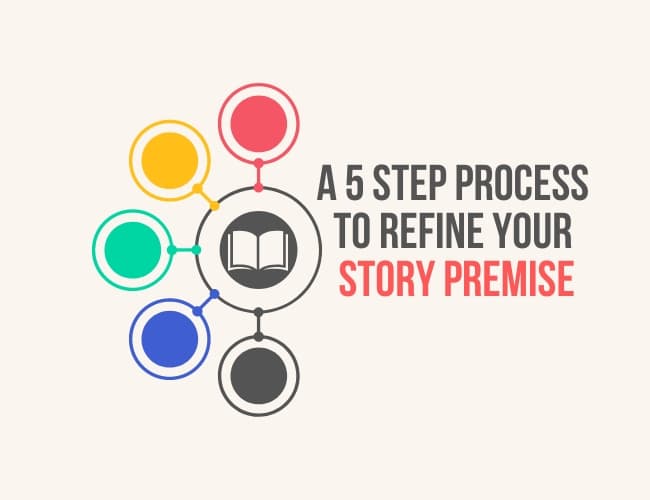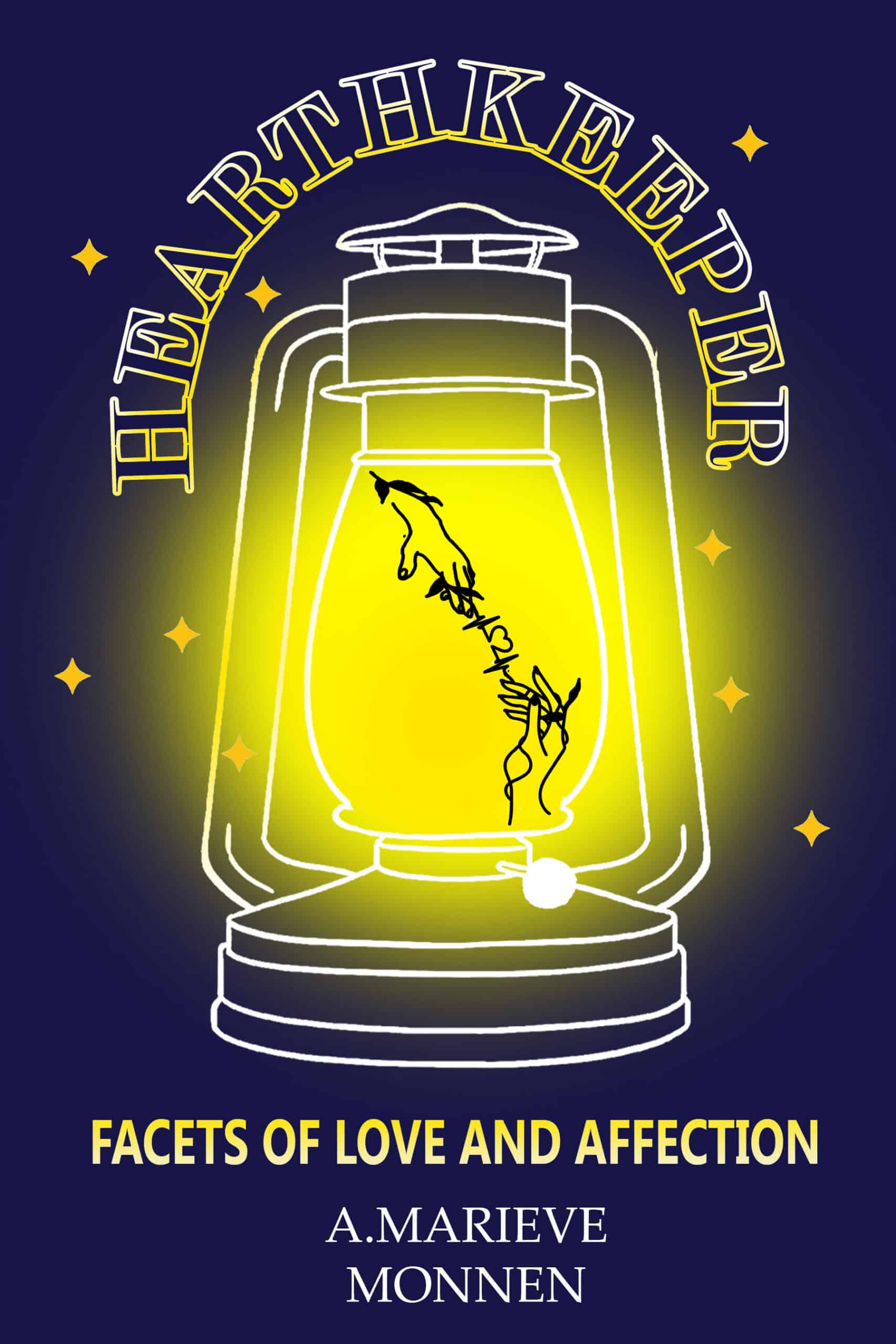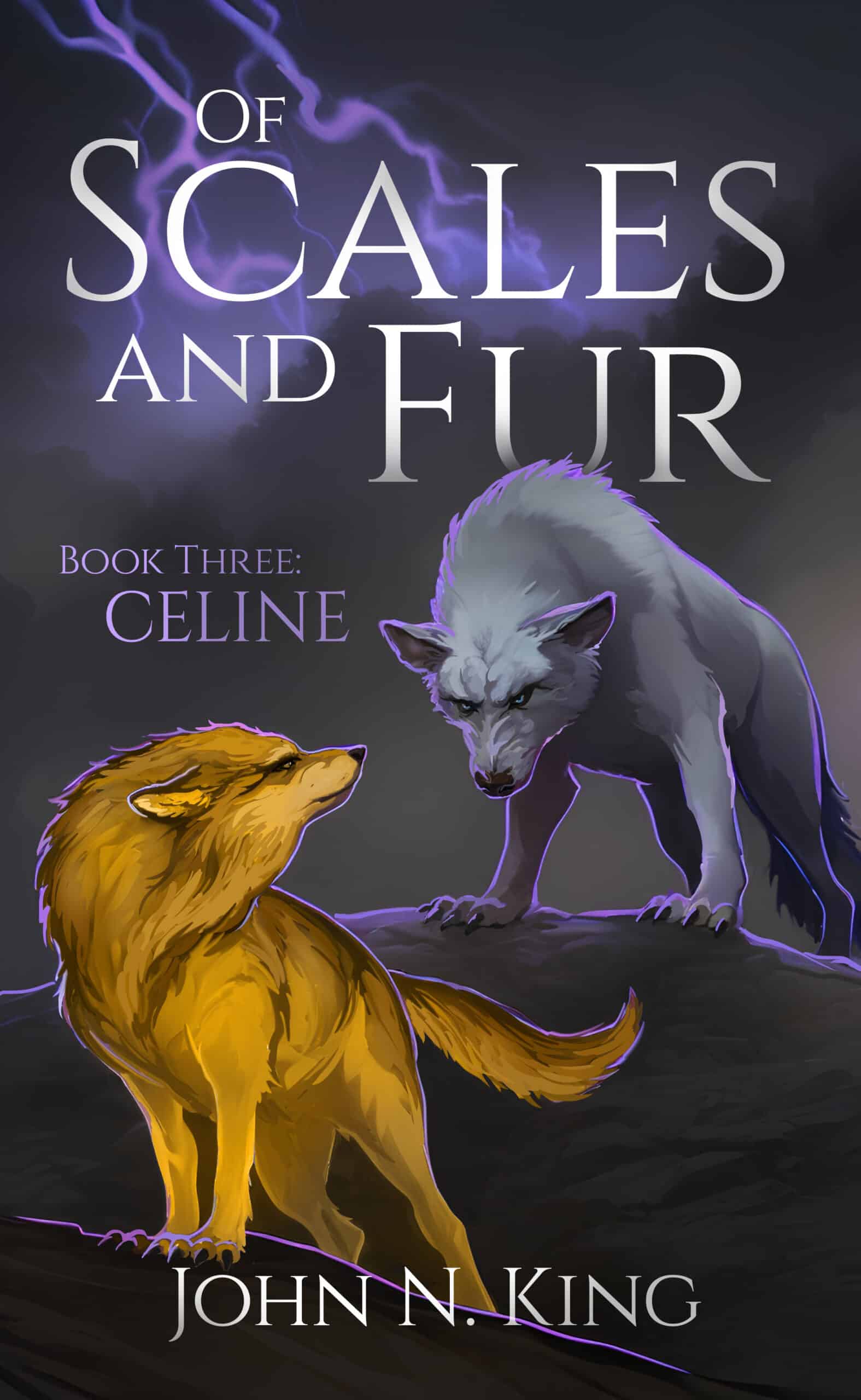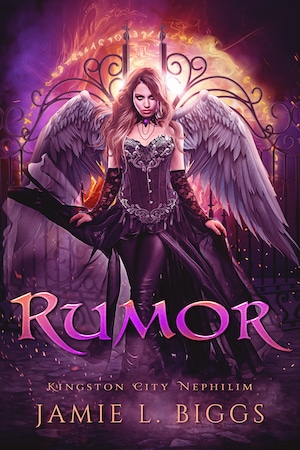Writers working on their first drafts often have trouble taking an initial idea all the way to a finished first draft and ultimately a final draft. Why? It could be a number of reasons, but the one I see most often is an unfocused story premise. Let me show you how a strong premise can save you precious time writing and revising the book of your dreams.

In my editorial practice, I have found that every writer who has struggled with an unfocused story premise will need to do a page one rewrite. That is a type of feedback that sucks to get and sucks to give. So, part of this article is selfishly inclined. I don't want to have to provide that feedback anymore.
An unfocused story premise often results in a story filled with random conflict that seems to go nowhere. There's a break in the cause-and-effect trajectory, which means the story can't build. It's filled with irrelevant events, and the characters act inconsistently with the set-up.
When those problems occur, the solution is to throw out everything (because nothing works) and start over by building a solid foundation. Clarifying the story idea is the key to establishing that.
In contrast, with a focused story idea, you can develop a solid premise. It'll tell you what type of conflict needs to occur, create a clear cause-and-effect trajectory, help you decide which events are necessary, and keep everything consistent. Let me show you how to move from a fuzzy initial idea to a solid premise that will give your story the strong foundation it needs to succeed with readers.
What is a Story Premise?
But first and foremost, let's talk about what a story premise is. I think Joe Bunting described it well in his article here: ” A premise is a single sentence summary of the central plot or argument of a story, book, or other writing piece.”
Now, at this stage of writing, I don't want you to look at your premise through the eyes of a marketer. I want you to look at it through the eyes of story development.
Your end-game goal here is not to ensure your story captures someone else's attention; it's to make your story clear and concise so you know where to go with it. That is the approach I want you to take, not a marketer's approach but a developmental one.
(Of course a solid premise will be as good as an elevator pitch later when you are looking at publication, but don't worry about that just yet.)
How to Use a Story Premise to Focus Your Idea (and Finish Your Book!)
Here are five steps to strengthen your story premise statement and get your book back on track!
1. Find Your Why
The first exercise I want you to go through is finding your why. Now, what does that even mean?
Writing a novel will take a long time, especially for a beginner. You will endure trials and tribulations as you chase your dream of being a published author. So, why do you love your cool idea so much that you're willing to suffer through everything to get it published?
I'm asking you to ruminate on that to find your deep level of why, the core of you that lights up when you think about your story. That passionate part of you is what will make your story authentic and meaningful.
In this exercise, ask yourself, “Why do I want to write this story?” Then, you'll ask ‘why' to each of your answers five times to help you move past surface-level responses and down deeper into the core of you.
For example, let's say you are a writer who wants to retell The Phantom of the Opera from the Phantom's perspective.
Editor (me): Why do you want to retell this story?
Writer: Well, it's because I love the story, and I want to fix the things that I didn't like in the original. That way, it can be the experience that I always wanted it to be.
Me: Why do you love it so much that you're willing to fix everything you didn't like?
Writer: I guess when I think about it, it's because I love its exploration of complicated relationships. The Phantom isn't evil; he's simply misguided. He is willing to do these heinous things because he is desperate not to be alone and to keep the woman he loves. I find the dynamic of things not being black and white incredibly fascinating. I would love to capture that.
Me: Why do you find that so fascinating?
Writer: When I was a kid, I also felt very alone and rejected by other people. Since I had issues connecting with others, I can identify with the Phantom's mindset and empathize with his desperation to get Christine to accept him.
Me: Why do you feel driven to tell a story about this particular pain point in yourself, rather than a different one?
Writer: When I think about it, I want to help people like me who are growing up and feel like making connections and friends is really hard. I want to give them the escape and the comfort that I craved because I know how isolating and lonely that feels. I want to give them a story that's for them, a story that explores their problem.
Me: Why do you want to help that type of person in particular? Why not a different kind of reader struggling with a different problem?
Writer: Because nobody helped me. I was on my own to figure out all those aspects of life. So I want to be to kids what I needed growing up. That's why I want to retell this to the version that I wanted it to be. I want to give people like me who feel like they can't connect with anyone a moment of reprieve, something to bring them comfort and joy.
Do you see how this writer has gone from only understanding the basics of their central idea to a deeper understanding of the emotional connection they feel with the idea?
That is an example of what this exercise could look like. You are just asking why to every answer that you give. The goal is to get down to the root of your motivation. Keep in mind that there is no right or wrong answer to this. It's just whatever is true for you.
2. Discover the Point of Your Story
As you move into the second exercise, you'll find that your deep-level why and the point of your story often go hand in hand—sometimes, they're even the same thing.
So, what's the point of your story?
When I ask you that question, I'm not trying to put you on trial and force you to justify the existence of your story. Instead, I'm putting you on the path to discovering what your story is arguing for. What is its message? What is it saying about life?
This is where some writers will pull away and say, “Kallista, my story doesn't have a point. I'm simply writing to have fun.”
To which I would say, “I love that having fun is important to you. However, I want to challenge you to pick up the actual stories you love, whether it's a book, a movie, or a TV show, and try to find one that doesn't have a point to it. Try to find one compelling story that isn't arguing for something.”
What you'll find is that all of them are making an argument. Every strong concept and well-developed story has a point.
So, what's the point of your story?
As you go through this process, you might end up with a group of points or related arguments. If you end up with several points on a list? It means your story is or will be unfocused. If you don't choose a single central point, the conflict will become unfocused as you write. Those different points or related arguments require different types of conflict to prove them, even if they're similar.
Let's look back to our Phantom of the Opera example. The writer could have said that her point is to show that hurting people hurt others. Her solution to that problem is compassion, not hatred.
But she could have also said that her story argues that people can change.
Those points are clearly related, but they would require differences within the conflict to prove them. Showing the reader that hurting people hurt others and that compassion, not hatred, is the solution, means the writer will have to build conflict around showing the Phantom being mean, but it will also include events that make you sympathetic with him.
Then, there would need to be a character that chooses to show hatred instead of compassion so the reader can see the unfavorable outcomes of that choice. Another character needs to choose compassion instead of hatred so the reader can see the positive outcome of that choice.
If the writer goes with their second idea, that people can change, the story's focus can't be on how people respond to traumatized individuals (like in the previous example). Instead, the conflict would have to focus on exploring whether it is worth helping someone set in their ways.
The conflict would need to show the reader a character refusing to do anything different even though it's getting negative results. There would need to be characters pressuring the protagonist to give up on that hurting individual. And the climax action would need to be around not giving up on that person. Then, the resolution is that the individual changes.
As you can see, these core conflicts are similar, but they aren't the same. The argument that people can change could fit as the point of a subplot, but when you're doing this exercise, you're trying to determine the point of your main plot line. Once you do that, you can start thinking about what type of conflict you need to prove that point.
3. Condense Your Story to its Simplest Idea
Now that you've established what your story is about, the next step is condensing your manuscript down to its most straightforward idea by describing it in 50 words or less. This practice is sometimes referred to as an elevator pitch or a log line. Whatever title you want to give it, the goal is the same: You're looking to distill your story down to its fundamental concept in a premise sentence.
When clarifying your story idea, this is the make-it-or-break-it exercise. If you can't condense your story down to that concise sentence, then take that as an indicator that your story is unfocused. There's too much chaos and too many ideas. It would be best to refine the idea before writing further.
Let's look at the Phantom of the Opera example again. Let's say that the writer's simple idea looks like this:
Set in the opulent Paris Opera House during the 1800s, this story is about a deformed musical genius and the extent he is willing to go to capture the heart of his muse.
Again, don't worry about making your story marketable at this stage. Right now, you're using this to focus your story idea so you know what to write moving forward. The goal is to clarify your story down to its simplest idea to give it a strong foundation.
Once you've done that, you can move on to the enjoyable part, fleshing out the idea using the premise!
4. Use Your Story Premise to Clarify Your Protagonist and Conflict
The first three exercises were reductive in nature, intended to remove chaos from your story and make it more orderly. But this exercise is where you get to flex those creative muscles.
John Truby best described the premise process in his bookThe Anatomy of Story: “The great value of the premise is that it allows you to explore the full story and the many forms it might take before you actually write it.”
This practice aims to flesh out that simple idea so you know precisely who your protagonist is, how they change, the conflict at the heart of the story, and the cause-and-effect trajectory. Keep in mind that you want to keep the premise 50 words or less.
So, let's jump right into things.
The first aspect I want you to focus on is the protagonist.
Key question 1: Is the main character in your 50-word description the most interesting person in your novel?
That's probably the most straightforward question in this exercise. If the answer is no, I highly suggest changing your story to follow the most interesting character. Readers want to explore stories with protagonists they can connect to and are interested in. If that's not your protagonist, consider changing it.
That's a pretty easy question to answer, right? Well, here's a little harder question for you:
Key question 2: In your 50-word sentence, is the conflict clear? Is it obvious who the protagonist is fighting? Is it apparent what the protagonist and antagonist are fighting over?
Let's look back at the example of The Phantom of the Opera. Here's a refresher of the 50-word description.
Set in the opulent Paris Opera House during the 1800s, this story is about a deformed musical genius and the extent he is willing to go to capture the heart of his muse.
Based on this description, what is the force of antagonism? Who is the antagonist? Is there a rival the Phantom is fighting? Does society pull them apart? It's not clear.
To make the conflict clear, the writer could change the premise to look something like this:
Set in the opulent Paris Opera House during the 1800s, this story is about a deformed musical genius and the extent to which he is willing to stop his muse from falling in love with her childhood best friend.
All right, now it's clear what the central conflict is. The Phantom has a rival. It's also clear what the goal is. The rival and the Phantom will be fighting over the muse's heart.
5. Let the Premise Guide the Cause-and-Effect Trajectory
Next, let's examine the cause-and-effect trajectory in the premise. There are several ways to think about this. John Truby describes it as the basic action, and Storygrid describes it as the initial strategy. Whatever terminology makes more sense to you is fine.
Basically, you're looking for how the protagonist is trying to solve their problem. What's their initial strategy? What basic actions does the protagonist take to make up his chase for this goal?
When you know how your protagonist is trying to solve their problem, you now have the backbone of the cause-and-effect trajectory in the story. All the conflict that happens will cause the protagonist to react in a certain way. How the protagonist reacts and tries to solve the problem should create more problems. That cause-and-effect pattern is what will build the story.
Let's look at The Phantom of the Opera example again. It's unclear how the Phantom is trying to solve this problem. We don't know if he's pleading with his muse, being violent towards her, or using traditional means of winning her heart. To solve that, the premise might end up looking something like this:
Set in the opulent Paris Opera House during the 1800s, this story is about a deformed musical genius so desperate to keep his muse from falling in love with her childhood best friend that he resorts to acts of terror to control them.
Now we know how he's trying to solve this problem. Awesome. Let's move on to what changes within the story.
Your premise should hint at what meaningful change will occur within the narrative. Who is your protagonist at the beginning of the story? Who is he by the end of it? There should be a difference.
This is where your point comes in because the way the protagonist changes should prove your story's argument. If you argue that hurting people hurt others and that compassion is the solution, then the arc of change should be made clear.
In The Phantom of the Opera example, it's not clear what changes. To define what shifts, the writer might say that the Phantom goes from selfish to selfless. Now, let's connect that arc of change to the initial strategy. Why does the failure of that initial strategy force the protagonist to change?
The Phantom is forced to change because exerting control over this muse makes him realize he's breaking the one person he loves. That realization forces him to let her go. So, to get that into the premise, it might look a little something like this:
When the muse of a deformed musical genius begins to fall in love with her childhood best friend, the phantom resorts to acts of terror to rip them apart. However, he must decide if keeping them apart is worth it if it destroys the woman he loves.
Now we know what the arc of change is (and we have a terrific elevator pitch for talking about our story!).
And now, we have a premise and a focused story idea. You know why you're telling this story, what point you're trying to prove to the audience, who your protagonist is, what the force of antagonism is, what the cause-and-effect trajectory will look like, and what the arc of change is. And all of it is neatly packed together within 50 words or less. Great job!
Your other major story elements can build out from this one original idea captured in a cohesive premise.
From Original Idea to a Killer Premise
Now that you've defined your story's “must-know” aspects, it will be much easier to start and finish it. You can use these steps to take your cool idea from something fuzzy to a strong premise that can help you create your major story elements and eventually use your elevator pitch to get your story in front of agents or readers.
It will also make it easier to avoid that dreaded page one rewrite request from editors. I suggest sitting down and using this process to flesh out your story. By the end of it, what does your premise look like?
What helps you focus your story ideas? Share in the comments.
PRACTICE
Set the timer for 15 minutes. Think about your work in progress or a story you love. What is the point of the story? What single foundational idea drives the protagonist and affects the conflict? How does that idea shine through the story structure or progression of events?
When you're finished, share your story in the Pro Practice Workshop for feedback from the community. And if you share, please be sure to comment on a few stories by other writers.




Love this!!
Great advice!!